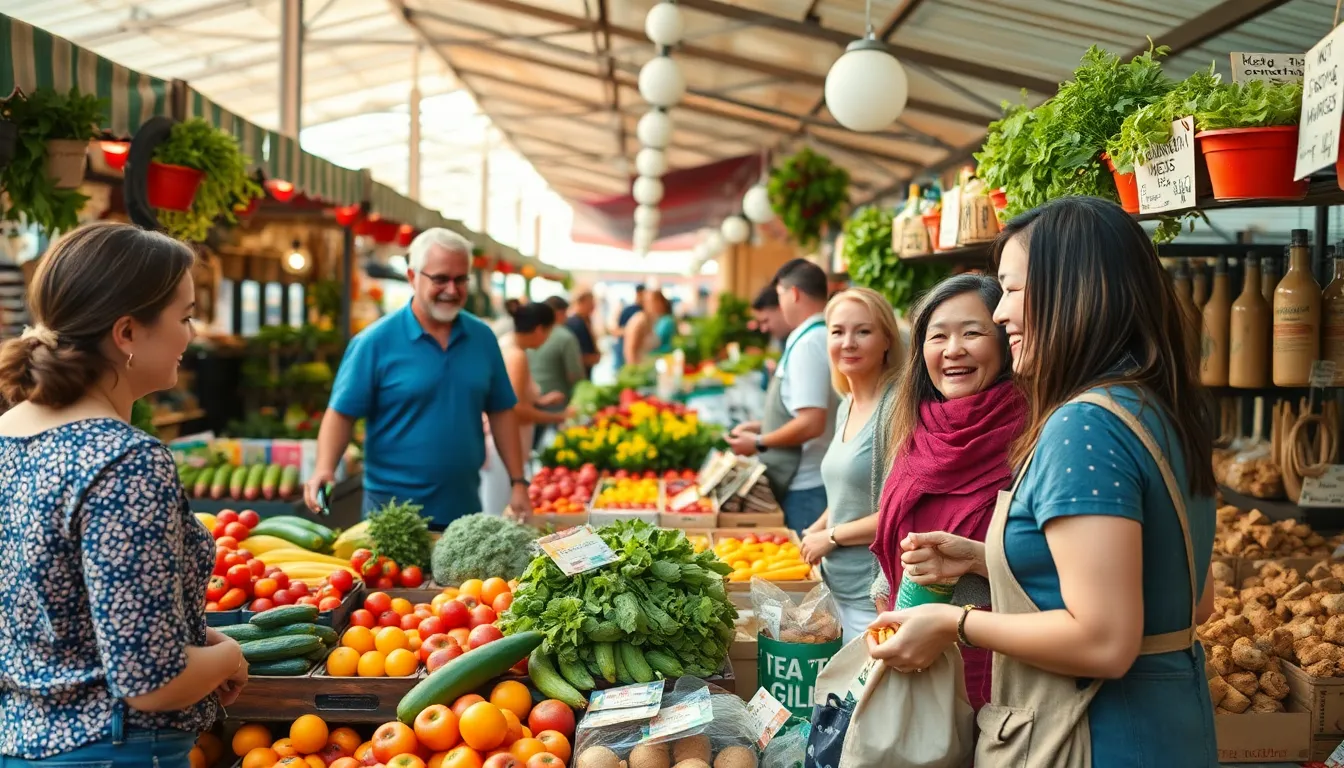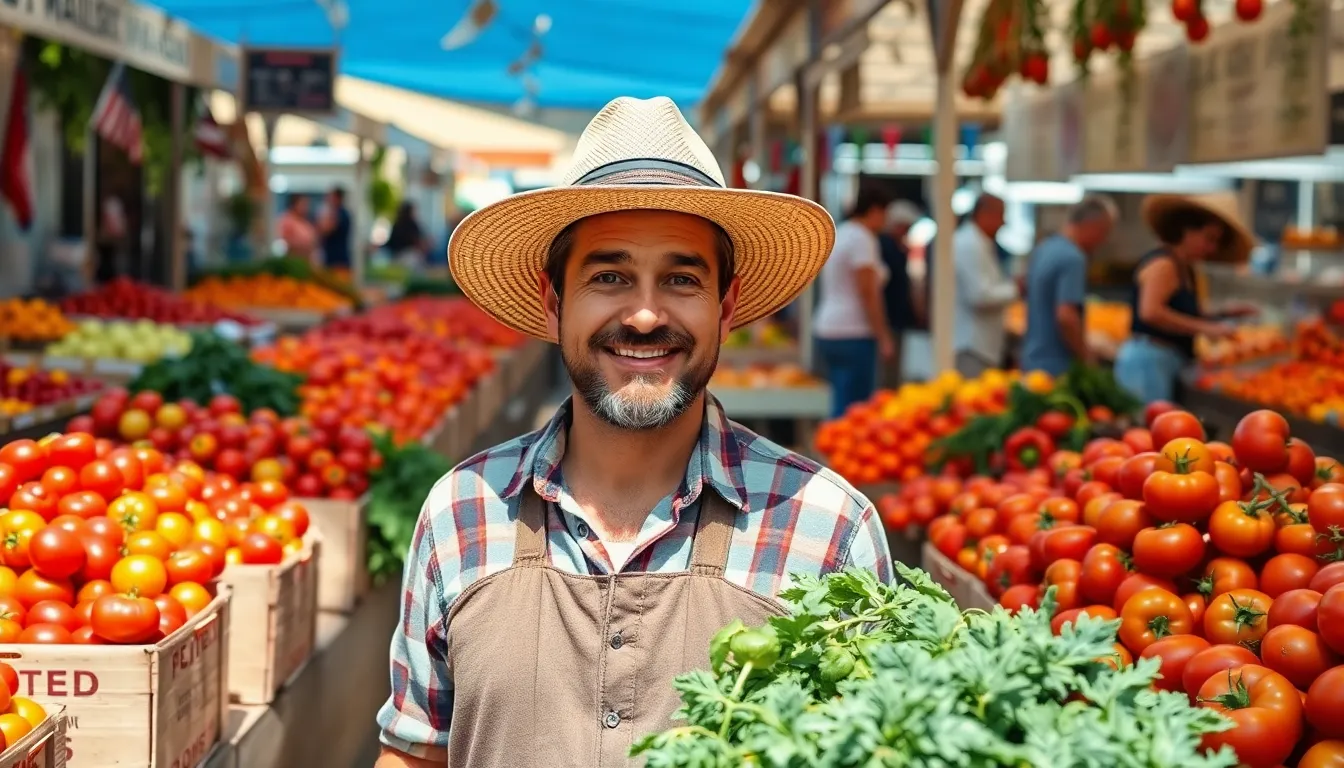Food is more than just sustenance; it’s a reflection of culture, history, and community. Local food traditions tell stories that connect generations, showcasing the unique flavors and ingredients of a region. From vibrant farmers’ markets to time-honored family recipes, these culinary practices enrich local identities and foster a sense of belonging.
Exploring local food traditions offers a delicious journey into the heart of a community. It reveals the significance of seasonal ingredients, traditional cooking methods, and the stories behind beloved dishes. As people increasingly seek authentic experiences, understanding these food customs becomes essential for anyone wanting to appreciate the rich tapestry of their local culture.
Table of Contents
ToggleOverview of Local Food Traditions
Local food traditions serve as a vital aspect of cultural identity. They reflect the history, values, and resources of a community. Each region boasts unique dishes, ingredients, and preparation methods that tell specific stories. Traditional cooking often involves seasonal ingredients, fostering a connection between people and their environment.
Additionally, family recipes play a critical role in preserving these culinary practices. Passed down through generations, they convey personal histories and familial ties. Farmers’ markets also enhance local food cultures by providing fresh produce, supporting local agriculture, and encouraging community interactions.
Local food traditions significantly impact family and social structures. Sharing meals fosters relationships, while diverse flavors promote inclusivity within communities. Culinary events, such as food festivals and communal dinners, further celebrate these traditions. Through exploration, individuals gain a deeper appreciation of their local cultures, enhancing both personal connections and community identity.
Local food traditions also adapt over time, blending influences from migration and globalization. By integrating new techniques and ingredients, communities innovate while honoring their heritage. Understanding these evolutions deepens the knowledge of regional cuisines and showcases the dynamic nature of culinary practices worldwide.
Importance of Local Food Traditions

Local food traditions play a crucial role in shaping cultural identities and impacting economies. They foster community bonds while preserving the unique histories of each region.
Cultural Significance
Cultural significance stems from the way local food traditions embody the values and stories of a community. Each dish, crafted using traditional methods and seasonal ingredients, reflects historical narratives and influences. Communities pass down family recipes, ensuring the preservation of culinary heritage and fostering a sense of belonging. Celebrations and culinary events centered on local foods strengthen communal ties, promoting inclusivity and shared experiences.
Economic Impact
Local food traditions present notable economic impacts. They stimulate local economies by supporting farmers’ markets, which provide fresh produce and seasonal goods. By choosing local products, consumers bolster local farmers and artisans, creating jobs and driving economic growth. Food tourism, driven by the allure of regional cuisines, attracts visitors and generates revenue for small businesses, restaurants, and culinary events. This interconnectedness between food and economy reinforces the sustainability of local food systems, enriching both the culture and livelihoods of the community.
Regional Variations in Local Food Traditions
Regional variations in local food traditions highlight the diverse culinary practices across different cultures and geographies. Each area offers unique flavors and ingredients, illustrating the rich tapestry of local identities.
North American Local Foods
North American culinary traditions showcase a variety of regional ingredients and dishes.
- Barbecue in the South: Southern barbecue features slow-cooked meats with distinct sauces, reflecting local tastes and traditions.
- Seafood in New England: The coastal regions utilize fresh seafood, with clam chowder being a notable dish emphasizing local flavors.
- Tacos in the Southwest: Incorporating indigenous ingredients, Southwest cuisine highlights tacos filled with items like corn, beans, and various meats.
These dishes often rely on seasonal produce, fostering a strong relationship between communities and their food sources.
European Local Foods
European local food traditions vary widely, often shaped by geography, climate, and history.
- Pasta in Italy: Regional pasta dishes showcase local ingredients, from tomato sauces in the south to seafood in coastal areas.
- Cheese in France: Each region produces distinctive cheeses, reflecting local agricultural practices and traditions, such as Brie from Île-de-France and Roquefort from the south.
- Pies in the UK: British pies often contain local meats and vegetables, with regional variations like Cornish pasties emphasizing local flavors.
These culinary practices highlight the importance of tradition and family recipes, thus preserving cultural heritage.
Asian Local Foods
Asian food traditions encompass an array of flavors and cooking methods influenced by local resources and customs.
- Sushi in Japan: Utilizing fresh fish and rice, sushi represents regional ingredients and meticulous preparation, emphasizing simplicity and flavor.
- Curry in India: Indian curries vary by region, with diverse spices and ingredients reflecting local agricultural products and culinary practices.
- Pho in Vietnam: This noodle soup features rich broth and herbs unique to the region, illustrating the balance of flavors that defines Vietnamese cuisine.
These food traditions not only reflect local cultures but also serve as vital expressions of family history and communal ties.
Challenges Facing Local Food Traditions
Local food traditions face significant challenges that jeopardize their continuity and relevance. These challenges include the influences of modernization and globalization, as well as environmental concerns that impact food practices.
Modernization and Globalization
Modernization and globalization pose threats to local food traditions by promoting standardized food systems. Global supply chains often prioritize convenience, leading to the decline of traditional farming practices and the erosion of unique regional cuisines. Fast food culture and processed foods dominate diets, overshadowing authentic local dishes. As consumers increasingly seek quick meal options, there’s less incentive to preserve time-honored cooking methods and seasonal ingredient usage. Additionally, media representation often glorifies foreign cuisines, making it difficult for local traditions to compete for attention. This shift diminishes community pride in regional specialties and encourages uniformity over diversity in culinary practices.
Environmental Concerns
Environmental concerns significantly challenge local food traditions by impacting agricultural practices. Climate change alters growing conditions, affecting the availability of traditional ingredients. Droughts, floods, and unpredictable weather directly threaten local farming, making it difficult for farmers to produce specialty crops. Additionally, industrial agriculture’s environmental footprint contributes to soil degradation, pesticide use, and loss of biodiversity, all of which undermine sustainable local food systems. As traditional farming methods often focus on ecological harmony, the shift towards high-yield, commercial agriculture can disrupt these practices, leading to a gradual loss of culturally significant food varieties and recipes.
Local food traditions play a pivotal role in shaping cultural identity and fostering community connections. They encapsulate the essence of a region’s history and values while promoting sustainability and economic growth. As these culinary practices face challenges from modernization and environmental concerns, it’s vital to champion and preserve them.
By embracing local ingredients and traditional cooking methods, individuals can not only enjoy authentic flavors but also strengthen their ties to the community. Supporting farmers’ markets and participating in culinary events enhances this connection, ensuring that future generations can savor the rich tapestry of local cuisines. The journey through local food traditions is not just about taste; it’s about celebrating heritage and building a sense of belonging.





